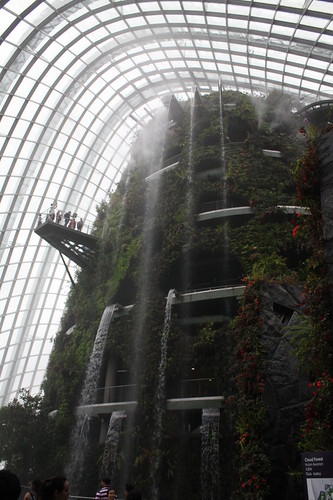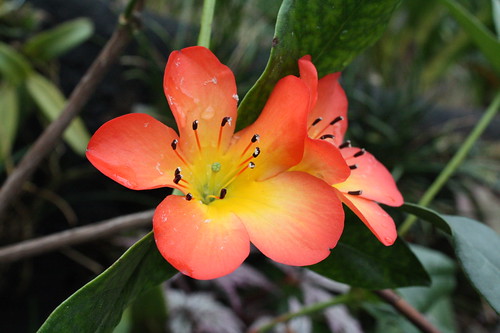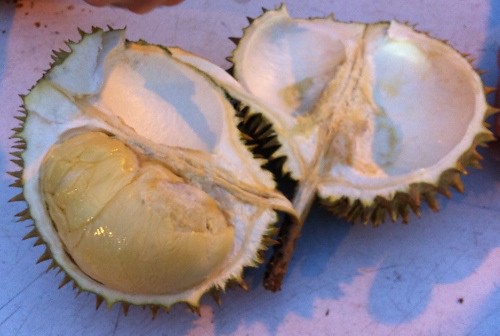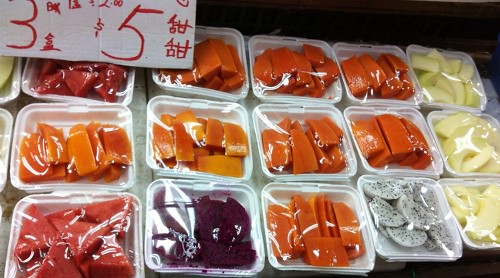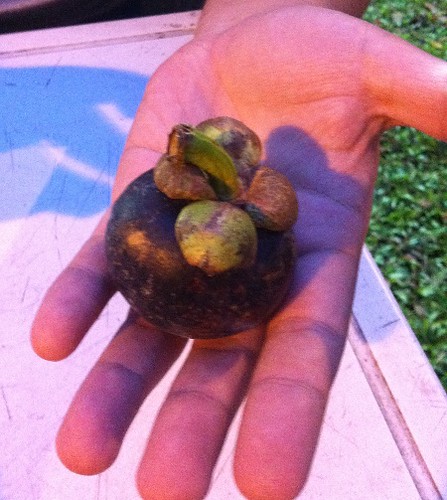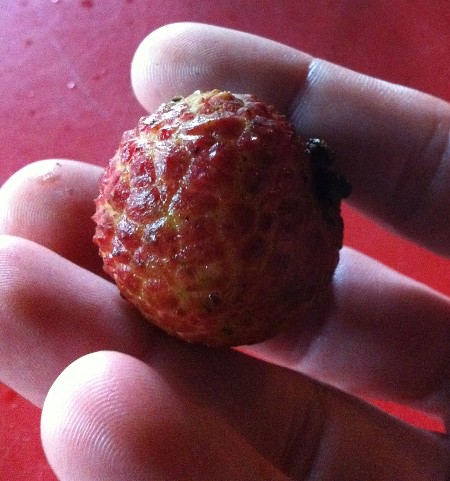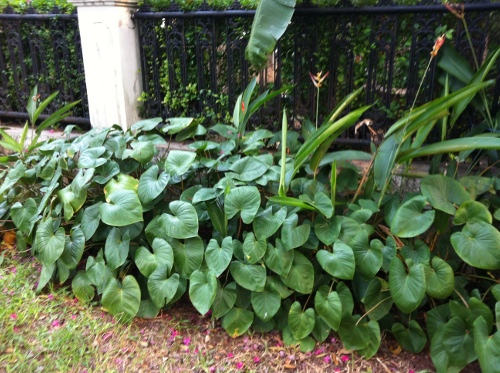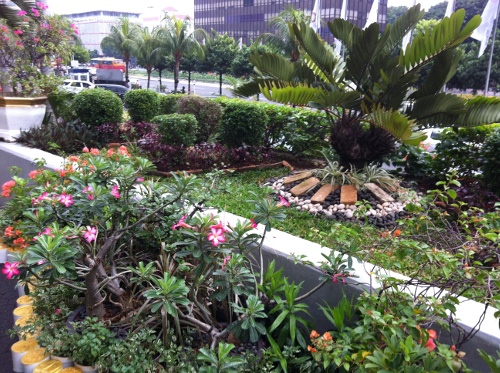For my one free day in Singapore, I set out to visit the recently-opened
Gardens by the Bay, a garden that cost over 1 billion Singapore dollars to build. I literally took 1,114 pictures during my 1 day in Singapore! Needless to say, I won't be posting all of those pictures here. I am trying to come up with a reasonable number of blog posts on a reasonable number of subjects and a small collection of photos. First off are some trees from the outdoor gardens, specifically those of the
Ficus,
Plumeria and various Palm genera.
GBB has a great collection of trees, including several species of
Ficus I had never seen before. One of the first
Ficus that I saw (and really admired) was
Ficus deltoidea. My friend, Shawn, that toured the gardens with me, said that
Ficus deltoidea is quite common in Singapore and is even used as a hedge or ground cover. Sure enough, later we saw it densely planted, as if intended to become a ground cover.
 |
| Ficus deltoidea |
Ficus deltoidea gets its name from the appearance of the veins on the leaf, which look like a river delta. There are a couple of other
Ficus with triangular leaves. The species
Ficus natalensis ssp. leprieurii has very smooth, triangular green leaves and small brown figs.
 |
| Ficus natalensis ssp. leprieurii, Triangle Fig |
The Rusty Fig has a very prominent trunk, even when the total tree height is not tall. The bark is smooth and gray. The tree gets its name from the color of the undersides of the leaves. This particular tree had a ton of aerial roots handing down from the branches. My guess is that the gardens staff is going to have their work cut out for them keeping this tree in check. It could easily take over and become a behemoth.
 |
| Ficus rubiginosa, Rusty Fig |
The most unusual
Ficus award goes to the Philippine Fig,
Ficus pseudopalma. This tree was small, but really didn't look like a
Ficus to me. Like a palm, the leaves were all emerging from the crown of the tree, with the large black figs packed in at the base of the leaves.
 |
| Ficus pseudopalma, Philippine Fig |
Most of the large trees were clearly identified with markers, but one
Ficus that I really liked was missing a placard. It had very small figs that were bluish in color.
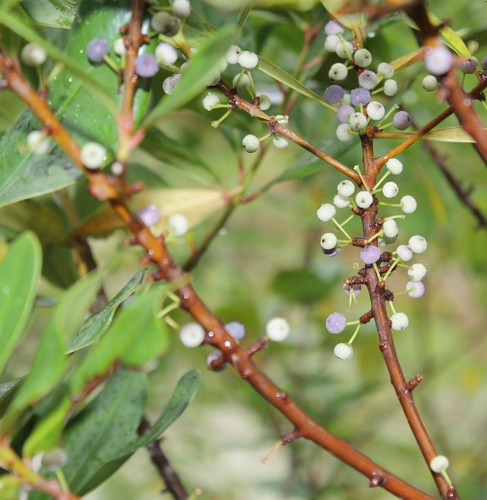 |
| Unknown Ficus |
I am used to seeing
Plumeria rubra trees in various flower colors in most tropical places. The only other
Plumeria species I have seen in
Plumeria pudica, which has leaves of a distinctively different shape. GBB had three other
Plumeria (or at least what I
thought were
Plumeria) that I had not seen before. One appeared to be the regular
Plumeria rubra, but in miniature. Another looked similar to
Plumeria rubra, but had a purplish tint to the leaves. The flowers were small and understated. The fruit that formed after pollination was totally different from the fruit of
Plumeria rubra; this one was fleshy, football shaped and dark purple.
 |
| Mystery tree with colorful leaves and small flowers |
I have enlisted the help of my friends in tracking down the identity of this mystery tree. They are thinking that it is not a
Plumeria afterall. One possible genus is
Cerbera. I am still looking for the correct ID.
 |
| Fruit or seed pod from the mystery tree. |
The other interesting
Plumeria was labeled as
Plumeria obtusa 'Hanging Windmill.' The flowers of this tree are spidery and white and the foliage is much darker than the typical
Plumeria.
 |
| Plumeria obtusa 'Hanging Windmill' |
Of course, there were lots of palm trees at GBB, but I am still only casually taking notice of palms when they strike me as very different from other palms I have seen. One that fit this bill was
Arenga pinnata, which had very dark fiber up the entire trunk. This is known as the sugar palm, because the unopened inflorescence can be tapped to yield a sugar water. This palm is important to the diet of the endangered Cloud Rat. Yes, that is a
real animal.
 |
| Arenga pinnata, Sugar Palm |
 |
| Arenga pinnata trunk |
The other palm that caught my notice was a bottle palm,
Hyophorbe lagenicaulis. There was a row of these along a median at one of the entrances to the park. They just have a really neat shape to them, don't they?
 |
| Hyophorbe lagenicaulis, Bottle Palm |
Well, this is something like episode 1 of 10, chronicling my trip to Singapore's Gardens by the Bay. So stay tuned for many more photos and posts soon!
